Ofra Amir
Interactive Explanations for Reinforcement-Learning Agents
Apr 07, 2025Abstract:As reinforcement learning methods increasingly amass accomplishments, the need for comprehending their solutions becomes more crucial. Most explainable reinforcement learning (XRL) methods generate a static explanation depicting their developers' intuition of what should be explained and how. In contrast, literature from the social sciences proposes that meaningful explanations are structured as a dialog between the explainer and the explainee, suggesting a more active role for the user and her communication with the agent. In this paper, we present ASQ-IT -- an interactive explanation system that presents video clips of the agent acting in its environment based on queries given by the user that describe temporal properties of behaviors of interest. Our approach is based on formal methods: queries in ASQ-IT's user interface map to a fragment of Linear Temporal Logic over finite traces (LTLf), which we developed, and our algorithm for query processing is based on automata theory. User studies show that end-users can understand and formulate queries in ASQ-IT and that using ASQ-IT assists users in identifying faulty agent behaviors.
"You just can't go around killing people" Explaining Agent Behavior to a Human Terminator
Apr 06, 2025Abstract:Consider a setting where a pre-trained agent is operating in an environment and a human operator can decide to temporarily terminate its operation and take-over for some duration of time. These kind of scenarios are common in human-machine interactions, for example in autonomous driving, factory automation and healthcare. In these settings, we typically observe a trade-off between two extreme cases -- if no take-overs are allowed, then the agent might employ a sub-optimal, possibly dangerous policy. Alternatively, if there are too many take-overs, then the human has no confidence in the agent, greatly limiting its usefulness. In this paper, we formalize this setup and propose an explainability scheme to help optimize the number of human interventions.
SySLLM: Generating Synthesized Policy Summaries for Reinforcement Learning Agents Using Large Language Models
Mar 13, 2025Abstract:Policies generated by Reinforcement Learning (RL) algorithms can be difficult to describe to users, as they result from the interplay between complex reward structures and neural network-based representations. This combination often leads to unpredictable behaviors, making policies challenging to analyze and posing significant obstacles to fostering human trust in real-world applications. Global policy summarization methods aim to describe agent behavior through a demonstration of actions in a subset of world-states. However, users can only watch a limited number of demonstrations, restricting their understanding of policies. Moreover, those methods overly rely on user interpretation, as they do not synthesize observations into coherent patterns. In this work, we present SySLLM (Synthesized Summary using LLMs), a novel method that employs synthesis summarization, utilizing large language models' (LLMs) extensive world knowledge and ability to capture patterns, to generate textual summaries of policies. Specifically, an expert evaluation demonstrates that the proposed approach generates summaries that capture the main insights generated by experts while not resulting in significant hallucinations. Additionally, a user study shows that SySLLM summaries are preferred over demonstration-based policy summaries and match or surpass their performance in objective agent identification tasks.
Examining the Prevalence and Dynamics of AI-Generated Media in Art Subreddits
Oct 09, 2024Abstract:Broadly accessible generative AI models like Dall-E have made it possible for anyone to create compelling visual art. In online communities, the introduction of AI-generated content (AIGC) may impact community dynamics by shifting the kinds of content being posted or the responses to content suspected of being generated by AI. We take steps towards examining the potential impact of AIGC on art-related communities on Reddit. We distinguish between communities that disallow AI content and those without a direct policy. We look at image-based posts made to these communities that are transparently created by AI, or comments in these communities that suspect authors of using generative AI. We find that AI posts (and accusations) have played a very small part in these communities through the end of 2023, accounting for fewer than 0.2% of the image-based posts. Even as the absolute number of author-labelled AI posts dwindles over time, accusations of AI use remain more persistent. We show that AI content is more readily used by newcomers and may help increase participation if it aligns with community rules. However, the tone of comments suspecting AI use by others have become more negative over time, especially in communities that do not have explicit rules about AI. Overall, the results show the changing norms and interactions around AIGC in online communities designated for creativity.
Explaining Reinforcement Learning Agents Through Counterfactual Action Outcomes
Dec 18, 2023Abstract:Explainable reinforcement learning (XRL) methods aim to help elucidate agent policies and decision-making processes. The majority of XRL approaches focus on local explanations, seeking to shed light on the reasons an agent acts the way it does at a specific world state. While such explanations are both useful and necessary, they typically do not portray the outcomes of the agent's selected choice of action. In this work, we propose ``COViz'', a new local explanation method that visually compares the outcome of an agent's chosen action to a counterfactual one. In contrast to most local explanations that provide state-limited observations of the agent's motivation, our method depicts alternative trajectories the agent could have taken from the given state and their outcomes. We evaluated the usefulness of COViz in supporting people's understanding of agents' preferences and compare it with reward decomposition, a local explanation method that describes an agent's expected utility for different actions by decomposing it into meaningful reward types. Furthermore, we examine the complementary benefits of integrating both methods. Our results show that such integration significantly improved participants' performance.
ASQ-IT: Interactive Explanations for Reinforcement-Learning Agents
Jan 24, 2023


Abstract:As reinforcement learning methods increasingly amass accomplishments, the need for comprehending their solutions becomes more crucial. Most explainable reinforcement learning (XRL) methods generate a static explanation depicting their developers' intuition of what should be explained and how. In contrast, literature from the social sciences proposes that meaningful explanations are structured as a dialog between the explainer and the explainee, suggesting a more active role for the user and her communication with the agent. In this paper, we present ASQ-IT -- an interactive tool that presents video clips of the agent acting in its environment based on queries given by the user that describe temporal properties of behaviors of interest. Our approach is based on formal methods: queries in ASQ-IT's user interface map to a fragment of Linear Temporal Logic over finite traces (LTLf), which we developed, and our algorithm for query processing is based on automata theory. User studies show that end-users can understand and formulate queries in ASQ-IT, and that using ASQ-IT assists users in identifying faulty agent behaviors.
Dataset and Case Studies for Visual Near-Duplicates Detection in the Context of Social Media
Mar 14, 2022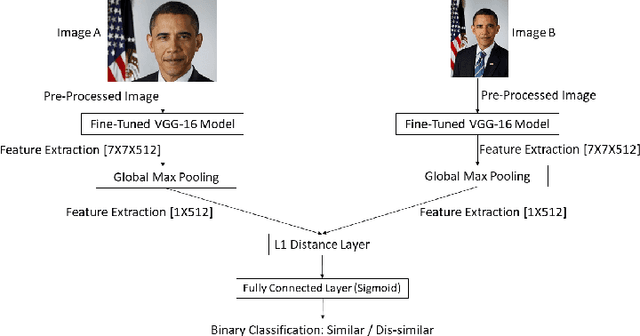
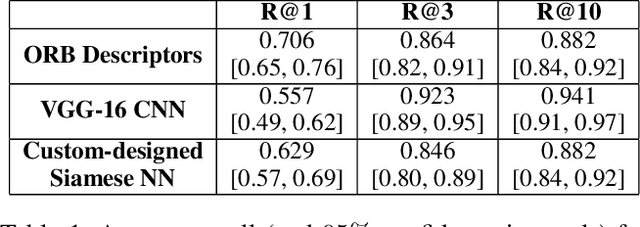
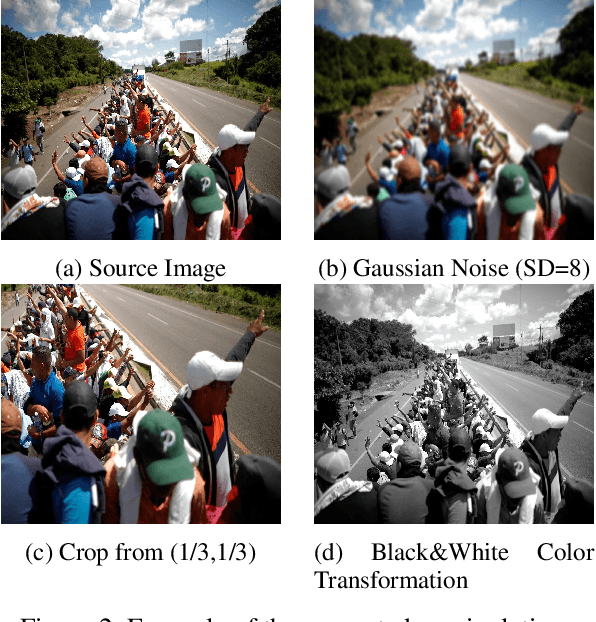
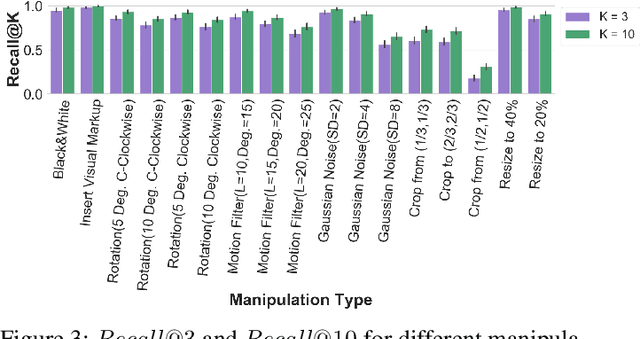
Abstract:The massive spread of visual content through the web and social media poses both challenges and opportunities. Tracking visually-similar content is an important task for studying and analyzing social phenomena related to the spread of such content. In this paper, we address this need by building a dataset of social media images and evaluating visual near-duplicates retrieval methods based on image retrieval and several advanced visual feature extraction methods. We evaluate the methods using a large-scale dataset of images we crawl from social media and their manipulated versions we generated, presenting promising results in terms of recall. We demonstrate the potential of this method in two case studies: one that shows the value of creating systems supporting manual content review, and another that demonstrates the usefulness of automatic large-scale data analysis.
"I Don't Think So": Disagreement-Based Policy Summaries for Comparing Agents
Feb 05, 2021
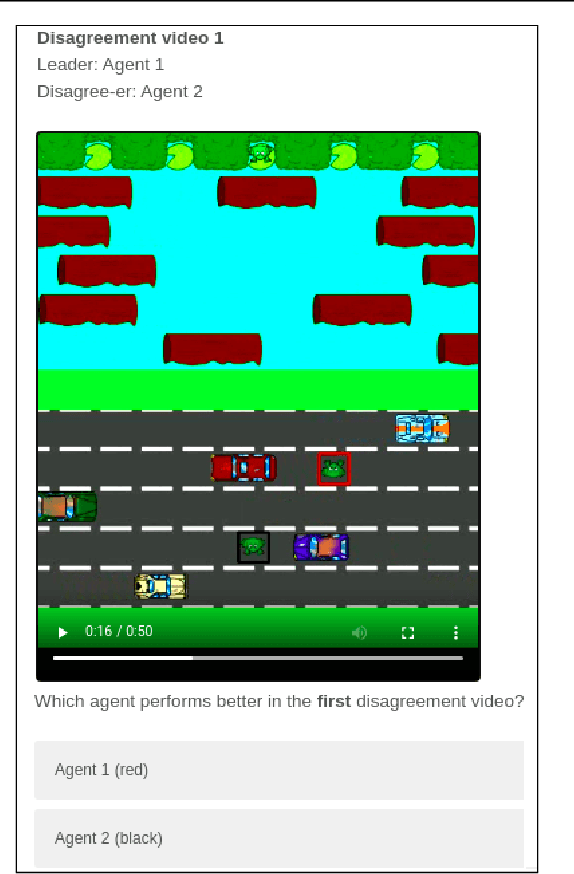
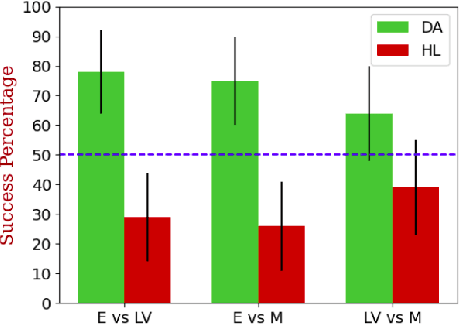
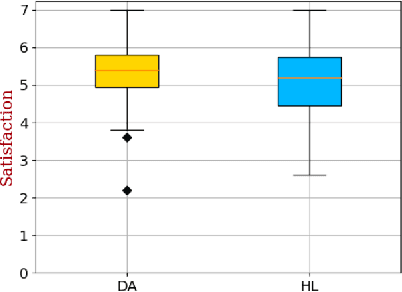
Abstract:With Artificial Intelligence on the rise, human interaction with autonomous agents becomes more frequent. Effective human-agent collaboration requires that the human understands the agent's behavior, as failing to do so may lead to reduced productiveness, misuse, frustration and even danger. Agent strategy summarization methods are used to describe the strategy of an agent to its destined user through demonstration. The summary's purpose is to maximize the user's understanding of the agent's aptitude by showcasing its behaviour in a set of world states, chosen by some importance criteria. While shown to be useful, we show that these methods are limited in supporting the task of comparing agent behavior, as they independently generate a summary for each agent. In this paper, we propose a novel method for generating contrastive summaries that highlight the differences between agent's policies by identifying and ranking states in which the agents disagree on the best course of action. We conduct a user study in which participants face an agent selection task. Our results show that the novel disagreement-based summaries lead to improved user performance compared to summaries generated using HIGHLIGHTS, a previous strategy summarization algorithm.
Learning to Characterize Matching Experts
Dec 02, 2020



Abstract:Matching is a task at the heart of any data integration process, aimed at identifying correspondences among data elements. Matching problems were traditionally solved in a semi-automatic manner, with correspondences being generated by matching algorithms and outcomes subsequently validated by human experts. Human-in-the-loop data integration has been recently challenged by the introduction of big data and recent studies have analyzed obstacles to effective human matching and validation. In this work we characterize human matching experts, those humans whose proposed correspondences can mostly be trusted to be valid. We provide a novel framework for characterizing matching experts that, accompanied with a novel set of features, can be used to identify reliable and valuable human experts. We demonstrate the usefulness of our approach using an extensive empirical evaluation. In particular, we show that our approach can improve matching results by filtering out inexpert matchers.
Local and Global Explanations of Agent Behavior: Integrating Strategy Summaries with Saliency Maps
May 29, 2020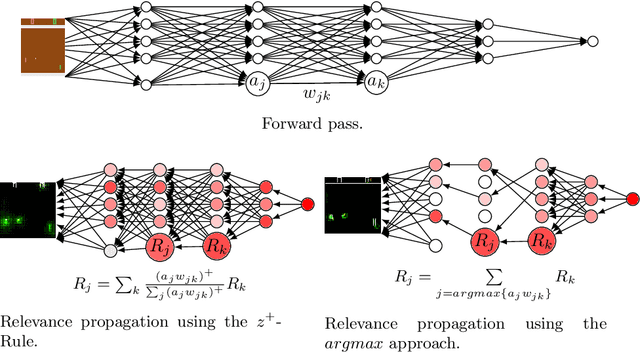
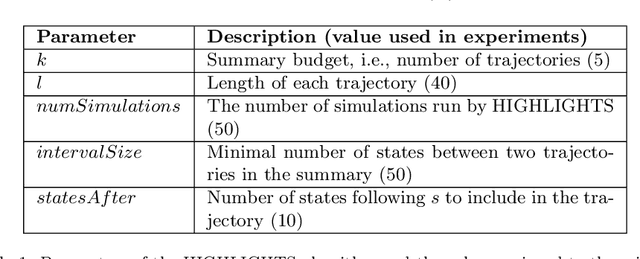
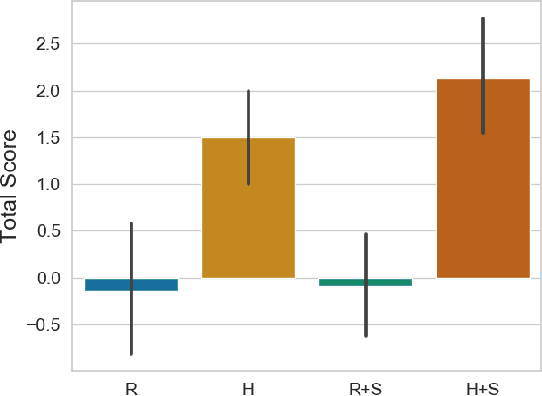
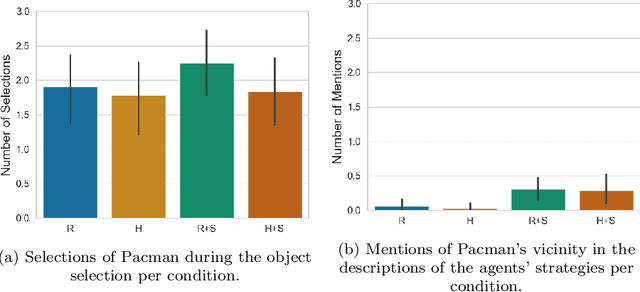
Abstract:With advances in reinforcement learning (RL), agents are now being developed in high-stakes application domains such as healthcare and transportation. Explaining the behavior of these agents is challenging, as the environments in which they act have large state spaces, and their decision-making can be affected by delayed rewards, making it difficult to analyze their behavior. To address this problem, several approaches have been developed. Some approaches attempt to convey the $\textit{global}$ behavior of the agent, describing the actions it takes in different states. Other approaches devised $\textit{local}$ explanations which provide information regarding the agent's decision-making in a particular state. In this paper, we combine global and local explanation methods, and evaluate their joint and separate contributions, providing (to the best of our knowledge) the first user study of combined local and global explanations for RL agents. Specifically, we augment strategy summaries that extract important trajectories of states from simulations of the agent with saliency maps which show what information the agent attends to. Our results show that the choice of what states to include in the summary (global information) strongly affects people's understanding of agents: participants shown summaries that included important states significantly outperformed participants who were presented with agent behavior in a randomly set of chosen world-states. We find mixed results with respect to augmenting demonstrations with saliency maps (local information), as the addition of saliency maps did not significantly improve performance in most cases. However, we do find some evidence that saliency maps can help users better understand what information the agent relies on in its decision making, suggesting avenues for future work that can further improve explanations of RL agents.
 Add to Chrome
Add to Chrome Add to Firefox
Add to Firefox Add to Edge
Add to Edge